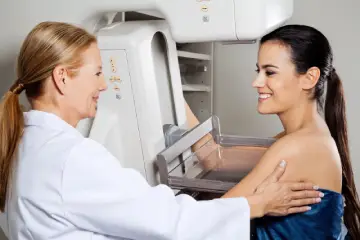Laparoscopy
Laparoscopy Q & A
What is laparoscopy?
Sometimes called minimally invasive surgery, laparoscopy is a technique that achieves the same outcome as traditional, open surgery with much smaller incisions. Open surgery involves making an incision several inches long in your abdomen, while laparoscopy incisions are rarely larger than half an inch.
Due to the smaller incisions, laparoscopy offers numerous benefits over open surgery, including:
- Less pain
- Faster recovery
- Less scarring
- Reduced risk of infection
This technique uses a thin, lighted instrument called a laparoscope, a flexible tube with a camera lens on the end. The lens magnifies and projects images onto a screen so your surgeon at The Women’s Center can view and treat your pelvic organs.
What procedures can use laparoscopy?
The team at The Women’s Center uses laparoscopy to perform several procedures, including tubal ligation for permanent female sterilization.
They may also perform hysterectomy surgery laparoscopically. Laparoscopic hysterectomies may involve removing the uterus through incisions in your abdomen or through the vagina.
What conditions can laparoscopy diagnose and treat?
The team at The Women’s Center may recommend a laparoscopy to look for the cause of heavy menstrual bleeding or long-lasting pelvic pain. They may also use this technique to diagnose and treat several conditions, such as:
- Endometriosis
- Uterine fibroids
- Pelvic floor disorders
- Ectopic pregnancy
- Ovarian cysts
If your surgeon finds abnormal tissue during a diagnostic laparoscopy, they may use special miniature surgical instruments to treat or remove the tissue in the same procedure.
What should I expect from a laparoscopy procedure?
First, your provider at The Women’s Center performs a physical and pelvic exam and reviews your medical history to make sure laparoscopy is right for you.
Before the procedure, they give you general or regional anesthesia so you don’t feel any pain. Then, they make a small incision and insert the laparoscope. They may fill your abdomen with gas to better view your pelvic organs.
Your surgeon examines your pelvic organs on a screen to diagnose or treat your particular condition. Afterward, you need to have someone drive you home since you’ll be sleepy from the anesthesia.
For more information about laparoscopic procedures in gynecology, call The Women’s Center or schedule an appointment online.
We Provide You With The Best Services

Mammogram
Learn
More
Routine mammograms are the best way to find breast cancer early when it’s most treatable. The expert OB/GYN team at...




